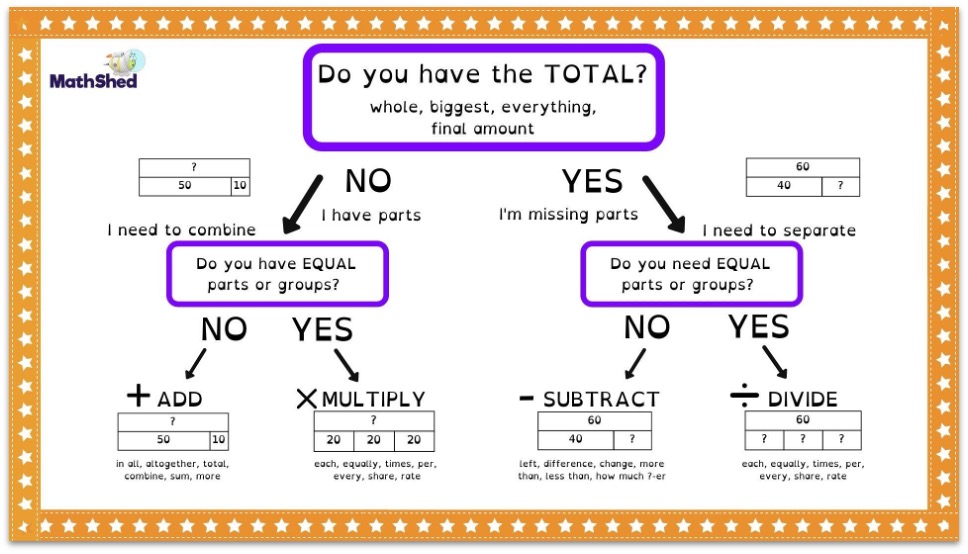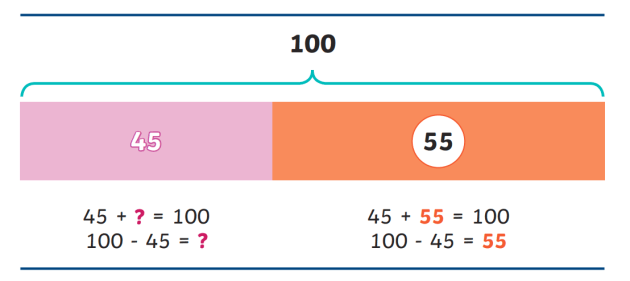A simple guide to understanding math better through bar model drawing techniques
Exploring Bar Design Illustration Techniques: A Comprehensive Guide to Envisioning Mathematics Concepts
Bar version drawing methods act as an important source for both educators and trainees in picturing mathematical principles. These models streamline intricate numerical partnerships, aiding in the comprehension of enhancement, subtraction, multiplication, and department. This overview outlines effective methods for applying bar designs, promoting active engagement and real-world links. As readers explore the useful applications and mentor ideas, they will certainly reveal just how these techniques can change their technique to mathematics.
Understanding the Essentials of Bar Version Drawing
Bar model attracting acts as an effective visual device in maths, helping with the understanding of analytical techniques and numerical connections. This strategy entails representing numbers and their connections via rectangle-shaped bars, making it simpler to visualize procedures such as addition, division, reproduction, and subtraction. Each bar's size represents a certain value, permitting learners to contrast quantities and comprehend percentages plainly.
To create a bar model, one starts by recognizing the issue's crucial elements, usually simplifying into components that can be visually represented. For instance, in an easy addition issue, two bars can be drawn, with their sizes representing the addends. The consolidated length shows the sum. On top of that, bar versions can be adjusted for a lot more intricate troubles, including portions and proportions, by changing the bars as necessary. Understanding these basics lays a solid foundation for reliable analytical and much deeper mathematical comprehension.
Benefits of Making Use Of Bar Versions in Mathematics
Utilizing bar versions in maths offers many benefits that improve learning and comprehension. These graphes aid students in realizing complicated concepts by breaking them down into convenient parts. Bar versions offer a clear structure for illustrating relationships between numbers, making abstract ideas a lot more concrete. They advertise a much deeper understanding of mathematical operations and facilitate problem-solving by enabling students to envision the information they are dealing with.
Moreover, bar versions support the development of important believing skills, as students have to analyze and translate the aesthetic information to reason. This approach motivates active interaction with the product, enhancing retention and proficiency of mathematical principles. By fostering a solid structure in visual proficiency, bar designs encourage students to come close to different mathematical difficulties with confidence. Generally, the assimilation of bar models into maths education verifies useful in cultivating both understanding and logical abilities amongst pupils.
Applying Bar Designs to Enhancement and Reduction
Bar designs offer as an effective device for visually representing enhancement and reduction problems. By showing the partnership in between numbers, they improve understanding and assist in analytic. Furthermore, real-life applications of these versions can assist learners comprehend mathematical principles in sensible contexts.
Representing Addition Visually
When students run into enhancement and reduction troubles, aesthetic help can considerably improve their understanding of these operations. Bar versions act as effective devices for representing enhancement. By splitting a rectangle into sections that correspond to the numbers included, students can imagine the connection in between the quantities. If a trainee needs to include 3 and 5, they can develop a bar separated into 2 sections: one area standing for 3 and the other standing for 5. This clear representation not just streamlines the addition procedure however additionally reinforces the concept of incorporating quantities. As trainees adjust these aesthetic aids, they create a much deeper comprehension of enhancement, bring about improved analytic abilities and greater self-confidence in their mathematical capabilities.
Subtraction With Bar Designs
Although reduction is often regarded as an extra intricate operation than addition, bar models can properly clarify this process for pupils. By visually representing the amounts involved, students can better understand just how numbers associate with each other. In a bar version for reduction, one bar represents the total, while another shows the amount being subtracted. This aesthetic distinction assists students understand the idea of "taking away." If a bar reveals 10 systems, and an additional bar representing 4 systems is gotten rid of, students can conveniently see that 6 units stay. This technique not just cultivates understanding of subtraction however also help in establishing analytic skills, permitting students to imagine their mathematical thinking and improve their general comprehension of mathematical concepts.
Real-Life Application Instances
Comprehending subtraction through bar designs lays a foundation for applying these methods in real-life scenarios. In various contexts, such as budgeting or purchasing, people can envision just how much money remains after costs. If a person has $50 and spends $20, a bar design can represent the complete quantity and the spent section, illustrating that $30 is left. In addition, moms and dads can use bar models to assist youngsters comprehend how numerous even more items need to be included in complete a set, such as having three apples and needing five. This visual depiction streamlines complex issues, assisting in comprehension and retention. Eventually, bar versions function as efficient devices in day-to-day decision-making, enhancing mathematical understanding in functional circumstances.
Visualizing Multiplication and Department With Bar Designs
In exploring the application of bar designs for multiplication and division, it is important to understand their fundamental principles. Constructing reproduction models enables learners to envision connections in between numbers, while effective department methods can be highlighted through these visual help. This technique enhances comprehension and analytical skills in maths.
Understanding Bar Models
Bar versions serve as a powerful aesthetic tool for illustrating the ideas of multiplication and division. They enable learners to represent mathematical partnerships in an organized format, assisting in a much deeper understanding of these operations. In multiplication, bar models show groups of equivalent size, allowing individuals to picture the overall quantity when incorporating these teams. Alternatively, in division, bar designs aid depict how a total amount is separated right into smaller, equal parts, clarifying the idea of partitioning. By utilizing these visual help, students can grasp the underlying principles of multiplication and division extra properly. This technique not only boosts comprehension yet also sustains analytic company website abilities, making bar designs news an indispensable possession in mathematical education.
Building Reproduction Models
Creating multiplication models using bar representations offers a clear technique for picturing the process of reproduction. These versions enable students to represent multiplication as groups of equivalent components, making abstract concepts much more concrete. To show (3 times 4), a trainee can attract one bar divided into three equal sections, each representing four systems. Furthermore, developing a second bar with the very same size enhances the understanding of duplicated addition, as each sector corresponds to one team. This aesthetic depiction not just aids in realizing multiplication but additionally enhances analytic skills. By using bar models, trainees can much better understand partnerships between numbers and develop a durable foundation for more intricate mathematical ideas, resulting in increased self-confidence in their capabilities.
Envisioning Department Approaches

Resolving Word Issues Utilizing Bar Model Techniques

For instance, in a trouble including addition and subtraction, students can draw separate bars for each quantity and then manipulate them to find the option. This procedure not only clears up the problem but also cultivates a much deeper conceptual understanding. In addition, bar designs can be adjusted for various types of word issues, making them versatile throughout various mathematical subjects. Eventually, making use of bar models can significantly enhance students' analytical skills by giving a clear aesthetic path to get to the appropriate answer.
Integrating Bar Versions in Different Math Topics
Bar designs can be perfectly incorporated right into numerous mathematics topics, enhancing pupils' understanding of principles past standard arithmetic. In algebra, these visual devices aid in representing inequalities and formulas, enabling students to visualize connections between variables. When dealing with geometry, bar models can show the properties of forms and spatial thinking, aiding pupils comprehend ideas like area and boundary properly. In statistics, bar versions facilitate the interpretation of information collections, enabling students to contrast quantities and recognize fads visually. Furthermore, incorporating bar versions within dimension subjects help in comprehending devices and conversions by offering a concrete representation of quantities. By utilizing bar designs throughout various mathematical areas, educators can cultivate a deeper comprehension of intricate concepts, consequently improving problem-solving skills and advertising vital reasoning (bar model drawing techniques). This convenience shows the utility of bar models as a fundamental device for students in their mathematical journey
Tips for Teaching Bar Versions Successfully
Incorporating bar versions right into mentor techniques calls for thoughtful strategies to maximize their efficiency. Educators should begin by introducing bar versions with basic, relatable instances that students can easily comprehend. This helps to construct confidence and experience with the concept. Slowly boosting the intricacy of problems permits students to apply their abilities gradually. Furthermore, teachers should urge students to develop their own bar designs, advertising energetic engagement and possession of their knowing.
Including joint tasks can also enhance understanding, as pupils go over and resolve problems in teams. Constant comments is crucial; instructors need to provide useful commentary on students' bar design representations to direct renovation. Finally, linking bar designs to real-life situations enhances their relevance, helping trainees see the practical applications of their mathematical skills. By carrying out these techniques, instructors can effectively harness the power of bar versions in their maths instruction.
Often Asked Questions
Can Prevent Models Be Utilized in Various Other Topics Besides Mathematics?
Bar designs can certainly be utilized in different subjects beyond math. They properly show concepts in scientific research, social researches, and language arts, helping to aesthetically stand for partnerships, processes, and ideas for improved understanding across self-controls.
What Age Is Best Suited for Discovering Bar Models?
Bar versions are best suited for youngsters ages 7 to 12, as they create concrete thinking abilities throughout this period (bar model drawing techniques). At this age, students can successfully realize abstract principles via graph and analytical methods
Exist Digital Equipment for Creating Bar Models?

Just How Can I Analyze Pupil Recognizing of Bar Versions?
Evaluating pupil understanding of bar models can entail quizzes, empirical analyses, and seminar. Educators could also evaluate trainees' completed designs and their capacity to explain their thinking, ensuring a thorough evaluation of comprehension.
What Are Typical Blunders When Utilizing Bar Versions?
Usual mistakes when utilizing bar models consist of misrepresenting quantities, falling short to precisely label bars, perplexing addition and subtraction, neglecting to utilize consistent ranges, and forgeting the significance of clear visual separation in between various aspects.
In enhancement, bar designs can be adapted for a lot more intricate problems, including portions and ratios, by adjusting the bars appropriately. Reduction is usually viewed as a more complicated procedure than addition, bar models can efficiently clarify this process for pupils. In a bar model for reduction, one bar represents the overall, while one more suggests the amount being deducted. If a bar reveals 10 devices, and an additional bar representing 4 devices is eliminated, pupils can quickly see that 6 units remain. When separating an overall right into equivalent teams, students can draw a lengthy bar to stand for the whole and then segment it into smaller sized bars that suggest each group.